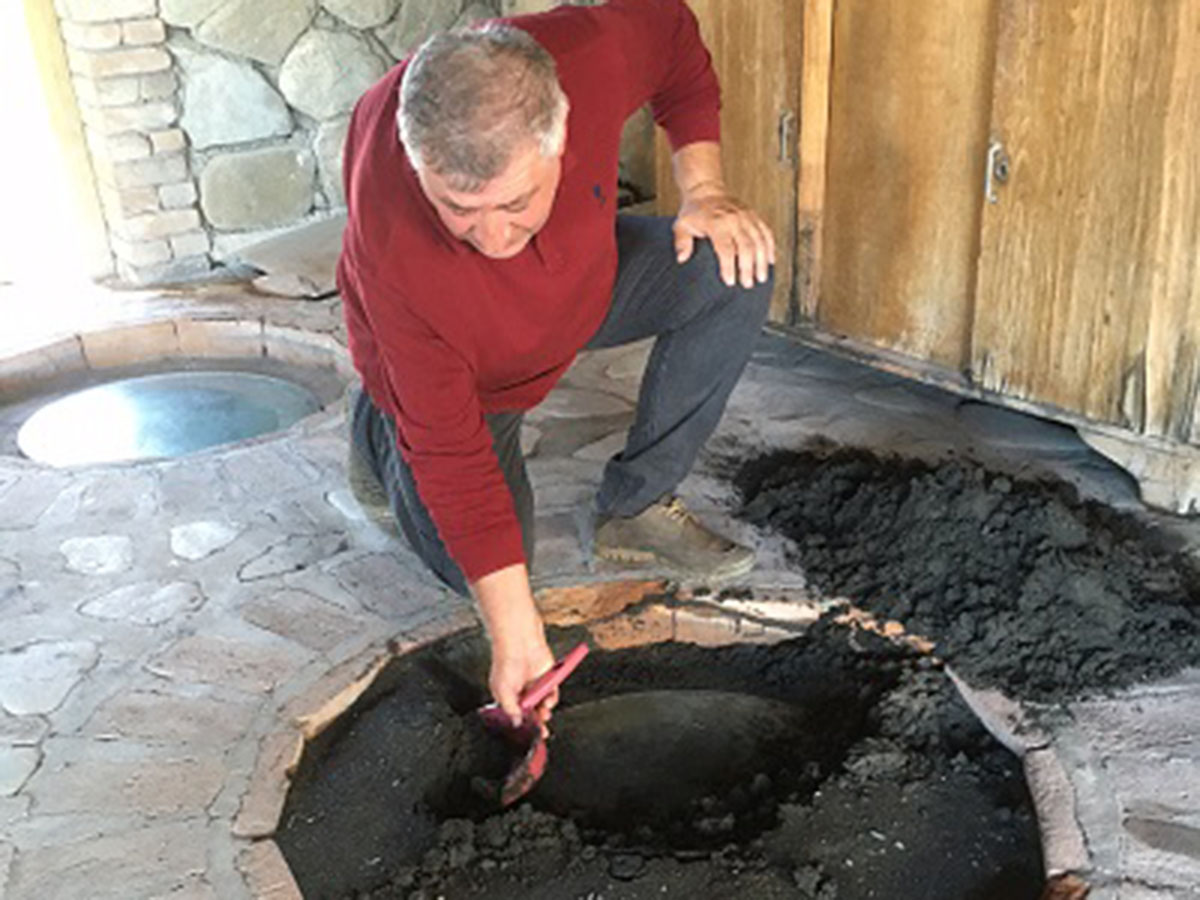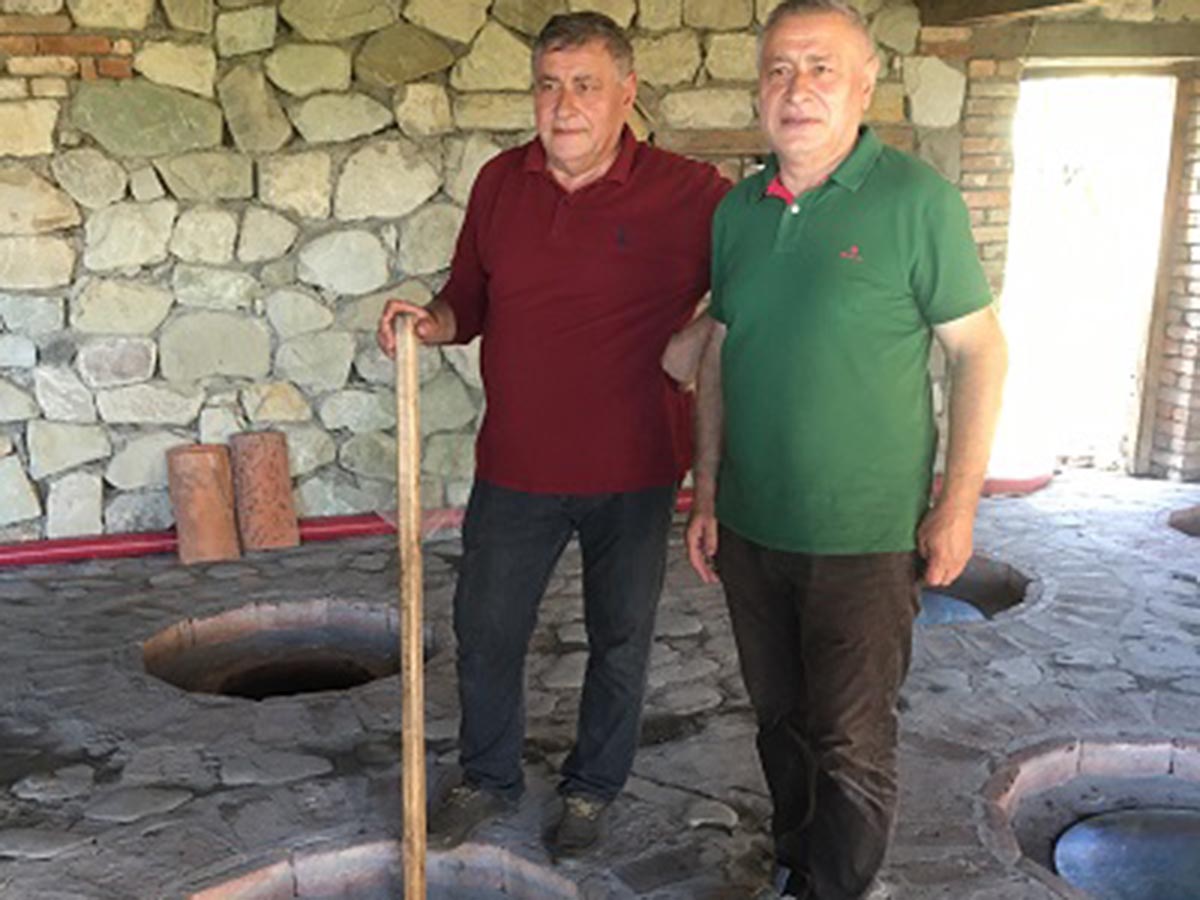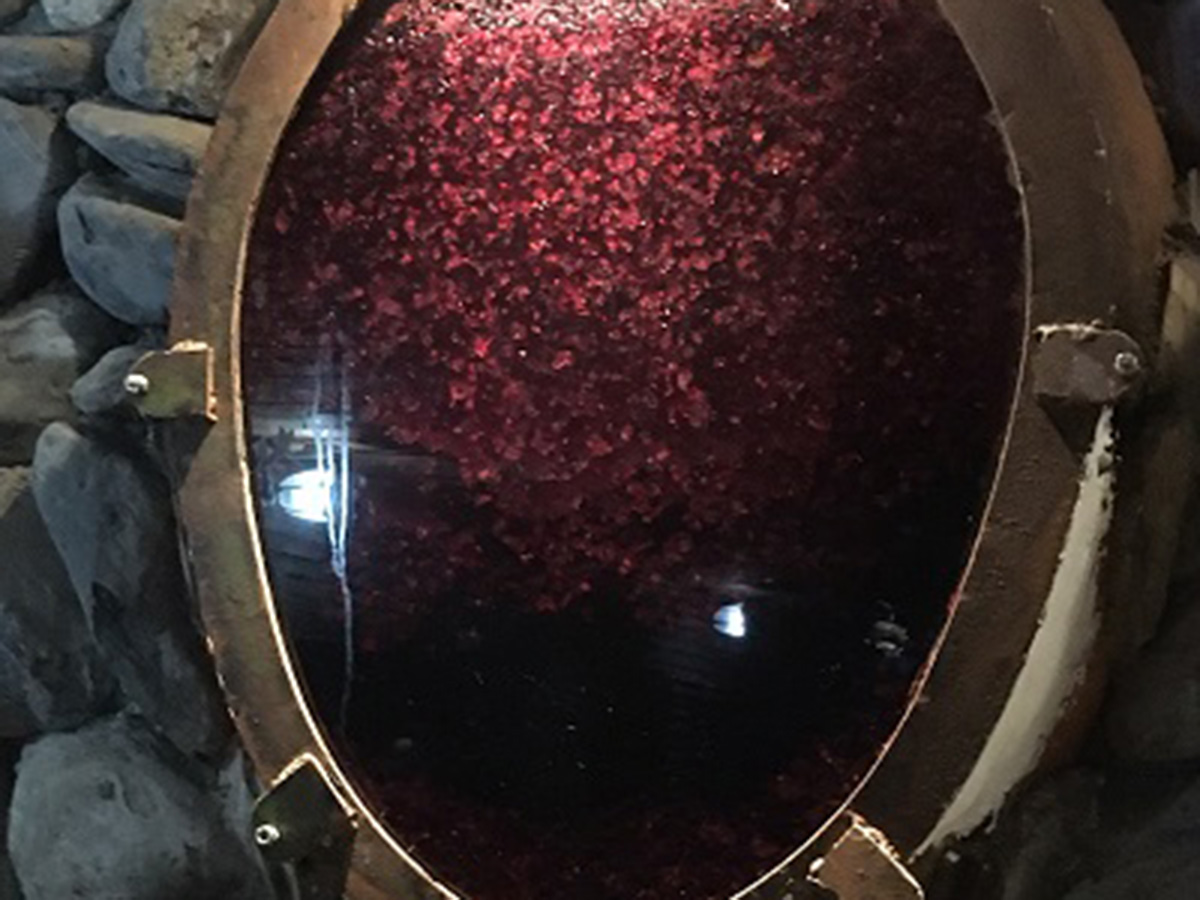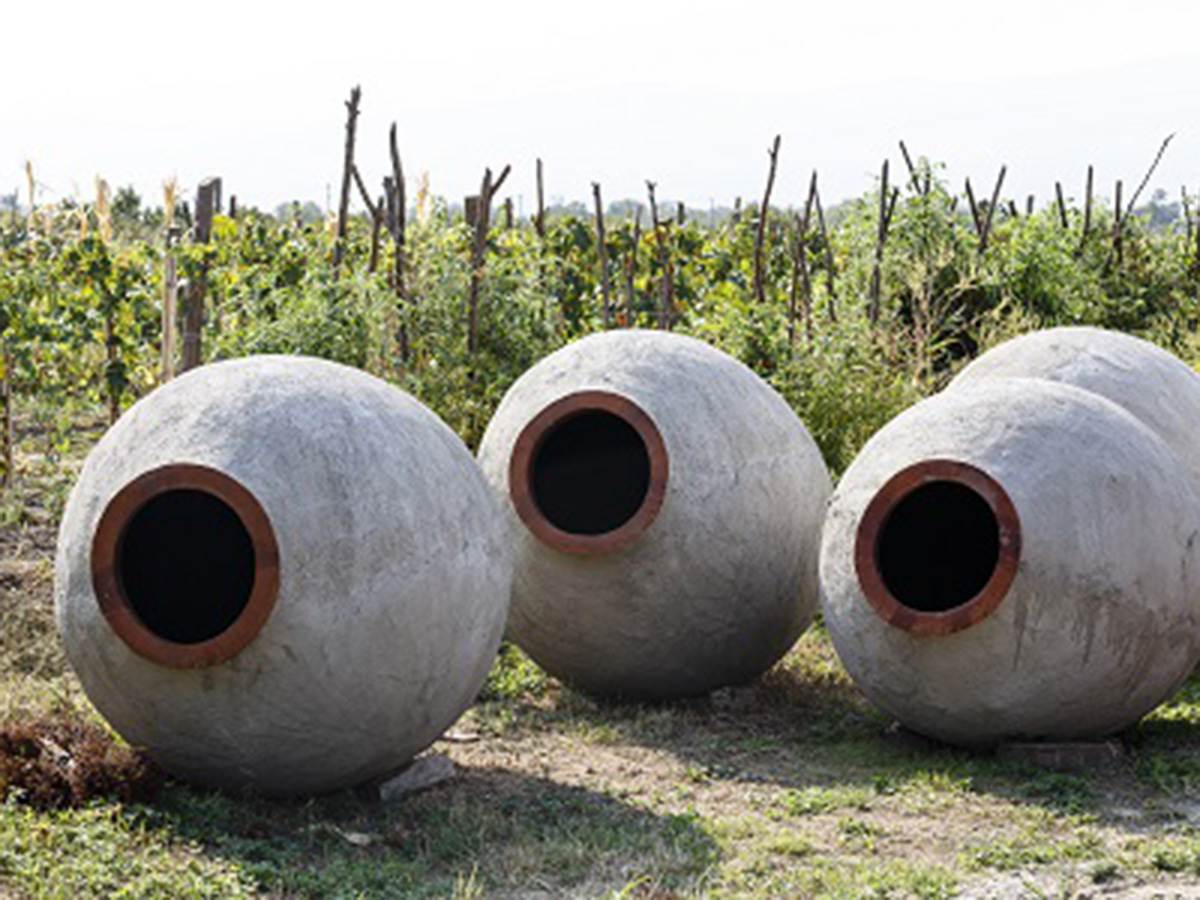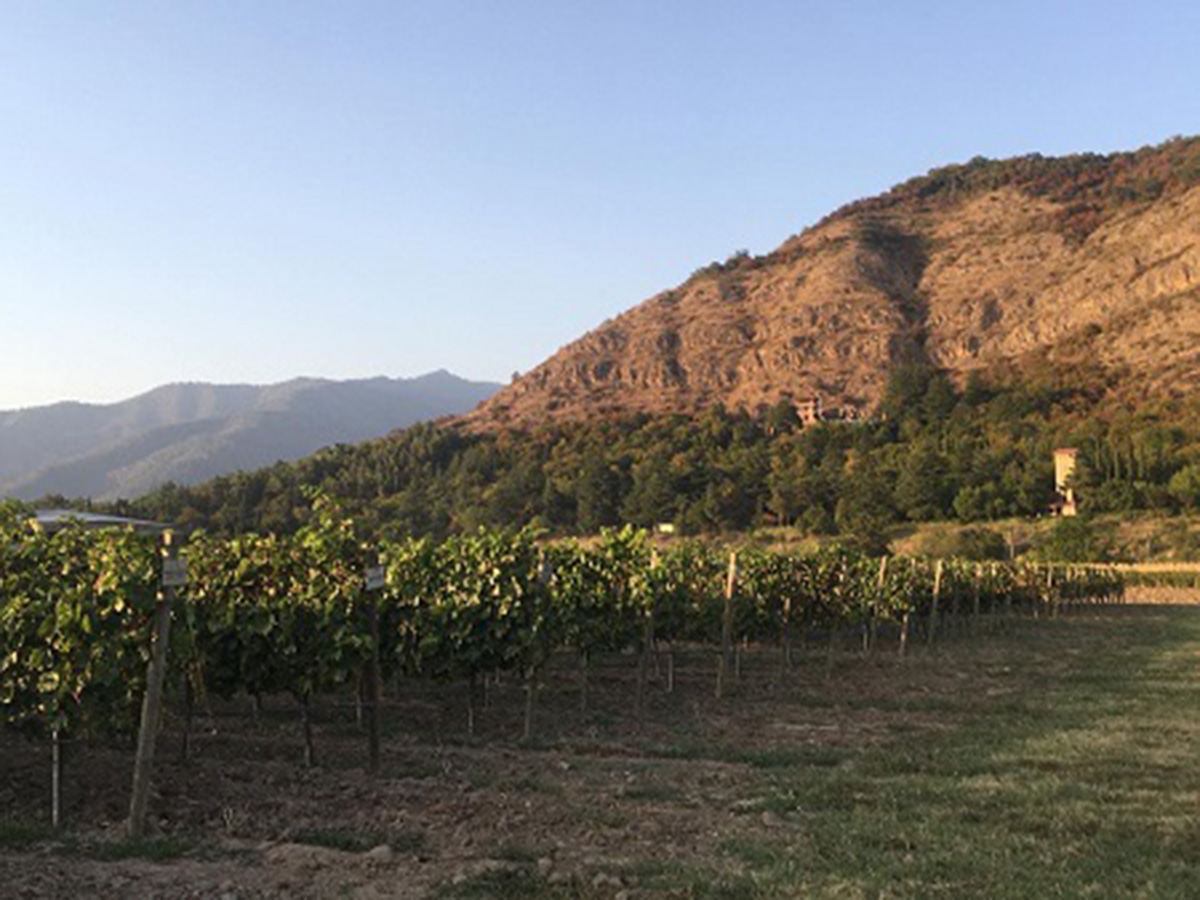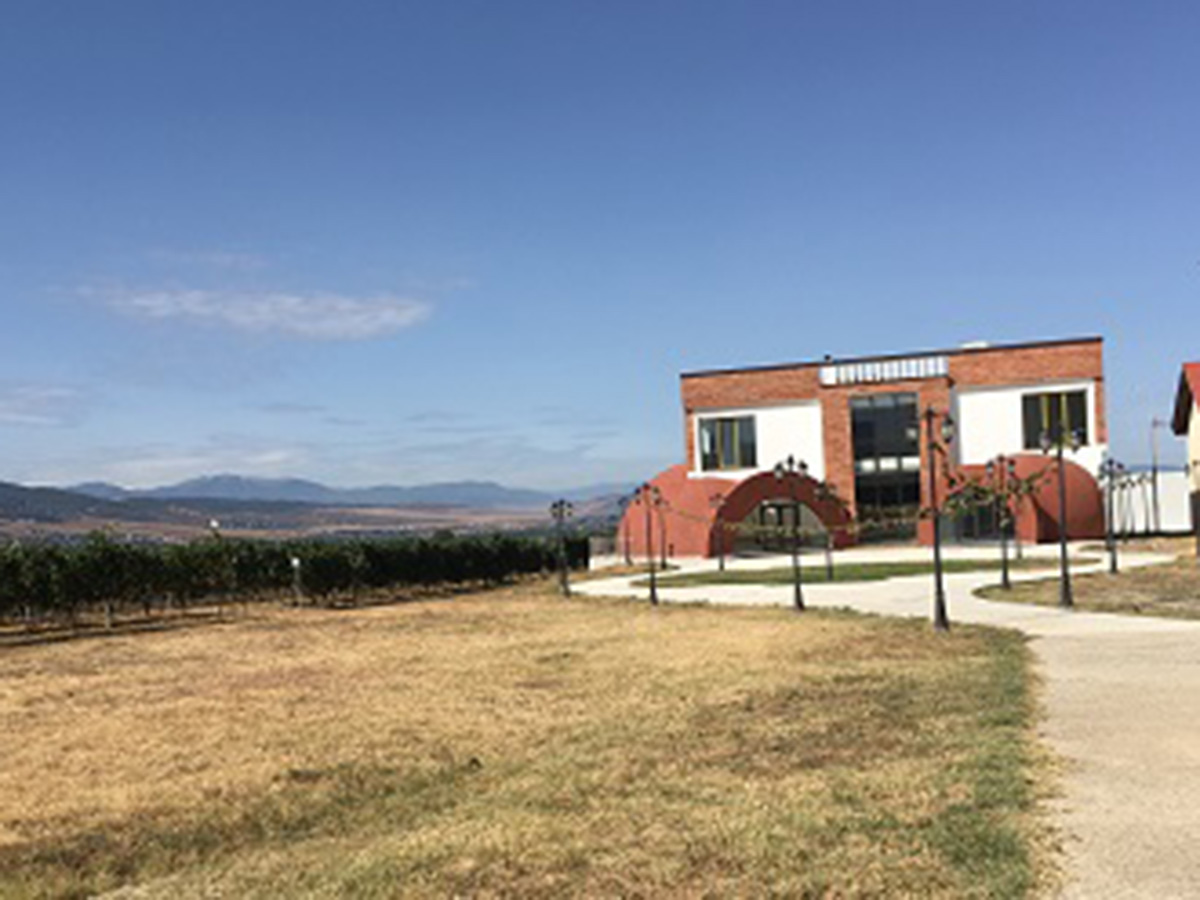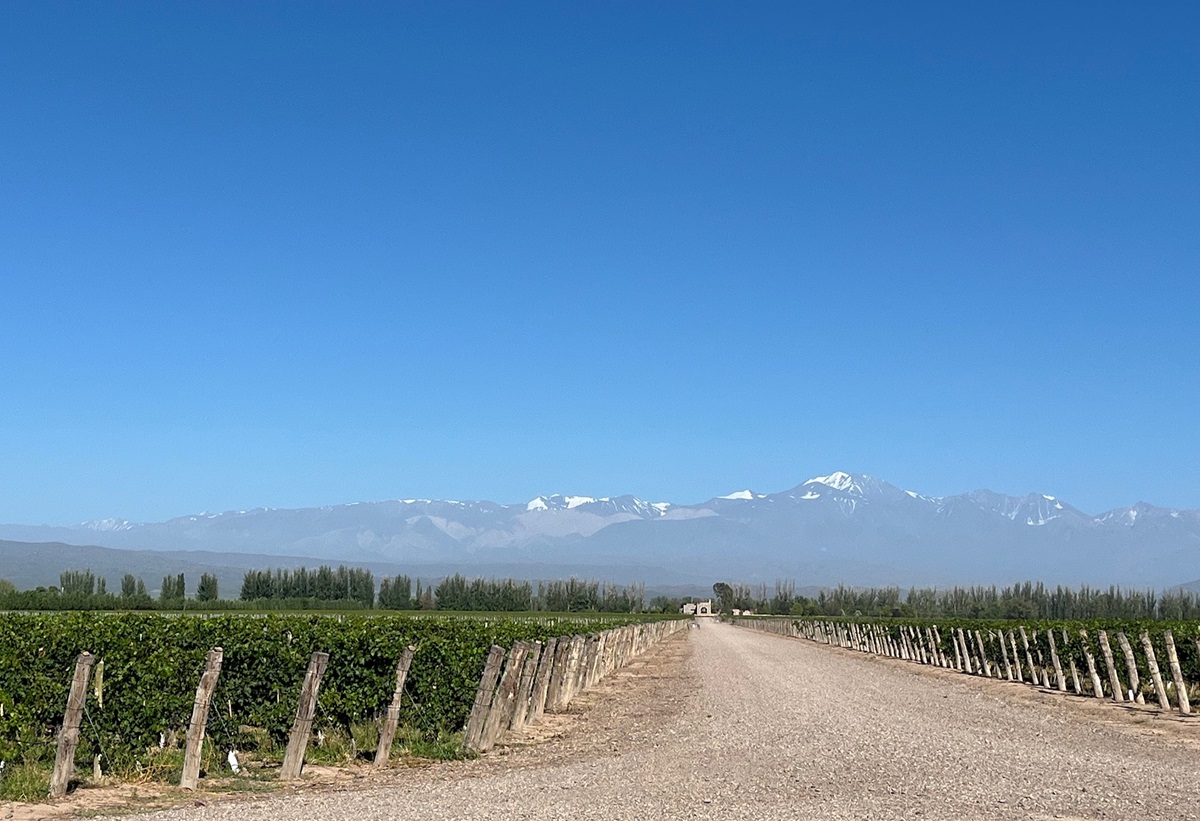GEORGIAN RED WINES
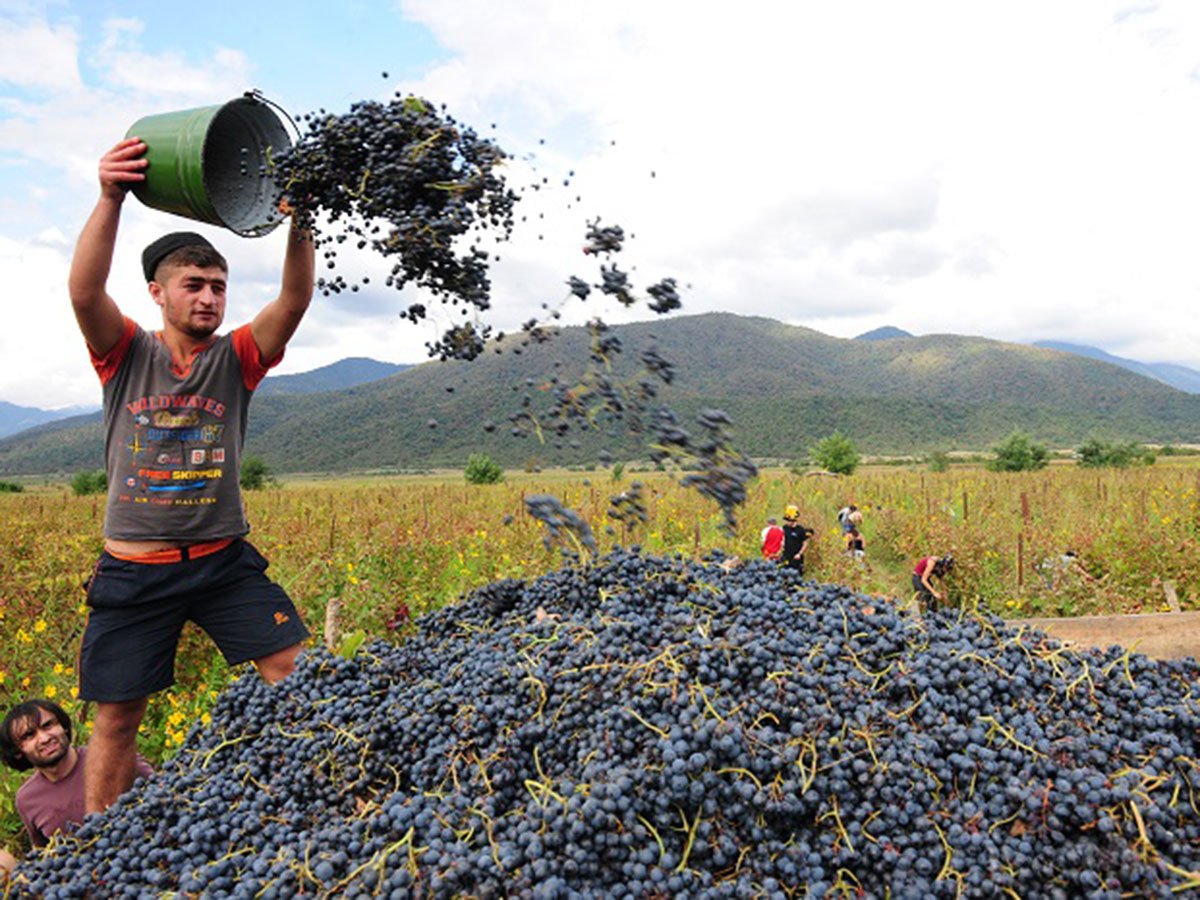
I am peering down a hole in the cellar of Twins Wine House in Kakheti, Eastern Georgia. I can see the rim of the vast 1500 litre ‘qvevri’, a handcrafted lemon-shaped clay vessel, which has been buried underground up to its neck and traditionally used here for fermenting and maturing wines for the last 8000 years.
One of the twins, winemaker Gela Gamtkitsulashvili, picks up a long wooden pole and begins churning up the juice, skins and seeds of the newly picked 2022 harvest inside the qvevri. It starts to resemble a dark inky purple broth. He hands me the pole – and I can see what hard work it is.
“We punch the cap of skins down four times daily during fermentation in the qvevri to prevent it drying out”, says Gela’s son Vako. “There is no need for temperature control, it never gets to more than 25 degrees C during fermentation in the qvevri – and we never add additives – all natural wild yeasts”.
“Once the cap falls to the bottom, fermentation is complete. We pump out red wine from its lees into another qvevri for another few months to prevent harsh tannins developing, but white wines are left on their skins in qvevri for six months”, he says.
A stone or perspex lid is placed on top of the qvevri and covered with black sand from the Alazani river bed, ready to be unearthed in several months time for tasting, usually three months for reds and six months for whites. It seems like the most natural winemaking process in the world. The Twins (pictured below) are true qvevri artisans using the vessel for 95% of their wines with a fascinating museum displaying the process, but in Georgia qvevris are now only used for 5% of wines, most made in European style.
In this qvevri is Saperavi, Georgia’s most planted red grape, covering 33% of vineyards and widely considered the country’s quality flagship grape. It is a wonderful grape which would appeal to lovers of Sangiovese or Tempranillo – with intense ripe cherry fruit aromas, spiciness and supple earthy texture that needs lamb or mature cheeses to accompany it – offering fabulously unique flavour.
“Saperavi has plenty of character, but it is not an easy grape to grow”, explain Gogi Dakishvili of Orgo wines. “You need to pay a lot of attention as it is high in malic acid, so malolactic fermentation must be controlled”.
Saperavi is a versatile grape – I tasted many different styles: rose, dry red, semi-sweet red to fortified. Lighter styles fermented and matured in stainless steel show primary cherry fruit flavours, whilst Saperavi fermented in qvevri without sulphur has dried tea notes and grippy earthy texture.
To enhance richness and texture Saperavi is also matured in both qvevri and oak to add complexity and supple tannins, whilst others are matured for up to 24 months maturation in just French oak barriques in the European style. Saperavi (which means ‘dye) is a ‘tenturier’ grape with a dark staining skin and flesh, with potential for great longevity in bottle and seems to show different microclimates well.
One of the best PDOs for Saperavi is Mukuzani, at the eastern end of Kakheti region’s right bank, with fabulous ripe dense fruits. Napareuli PDO on the left bank usually has a drier style. Another interesting new PDO is Khashmi, a cooler area in outer Kakheti nearer Tbilisi giving Saperavi with bright fruits and higher acidity, Mildiani winery make a wonderful soft rounded example highlighting this new PDO’s potential.
Western Georgia has a wealth of its own red grapes. Otskanuri Sapere is a fascinating grape from Racha-Lechkhumi and Imereti regions with dark colour, black fruits and high acidity, but it needs time in bottle to soften tannins – at its best it can taste like an Italian Dolcetto or Barbera.
Another unprounceable grape, Chkhaveri comes from Adjara and Guria regions in western Georgia which can make lovely fresh styles with dark berry fruits and soft light tannins – Lukasi winery make attractive Chkhaveri rose.
At Saguramo’s experimental viticultural centre near Tbilisi (pictured above), winemakers experiment with other red grapes from Imereti region. I loved mid-weight Jani, spicy peppery cranberry-fruited Adanasuri and succulent soft textured, slightly sweet Alexandrouli. These grapes offer us a glimpse of the future of Georgian red wines, as winemakers start to propagate them more across the country, to accompany their flagship Saperavi.
SAPERAVI 2021 Pi Winery
£18 Naked Wines
Teona Omarashvili (pictured above) makes superb Saperavi from her 1.5 hectare plot in Akura near Telavi in her tiny Tbilisi winery: fresh vibrant cherry fruits with rich intensity.
SAPERAVI 2020 Tbilvino
£12.99 Georgian Wine Soc; Strictly Wine; Hic Winemerchants; Adnams
Bright cherry fruits with some intensity and richness – a good introduction to Saperavi made in stainless steel.
SAPERAVI 2019 Tiko Estate
£19.25 Astrum Cellars
Lovely morello cherry fruits, slightly herby with succulent fleshy fruits and silky tannins matured 9 months in a mix of new and old French barriques from an up-and-coming producer.
SAPERAVI OAK AGED 2017 Lukasi
£38 Taste of Georgia
Fermented in 30% new French barriques for 12 months, this mature Saperavi has developed blackcurrant aromas, plummy, liquorice, tar undertones and smooth velvety texture.
MUKUZANI SAPERAVI 2020 Casreli
£18 Georgian Wine Society
Ripe cherry fruits with black tea notes, rich intense luscious with a glycerol texture, beautifully balanced tannins from ‘natural’ winemaker Misha Dolidze.
OTSKHANURI SAPERE 2018 Mildiani
£24 GinVino
Dark intense colour, sappy cranberry fruits, vibrant acidity and luscious sweet notes with two months in qvevri – but no oak.
Join Rose’s Tokaj Masterclass on 24 November www.rosemurraybrown.com
wine tastings
The perfect gift for the wine enthusiast in the family. Rose does In-person tastings too.
cellar advice
Rose does cellar valuations for private clients, valuations for insurers & bespoke portfolio management.
Related stories
March 31, 2024
By Rose Murray Brown MW Published in The Scotsman 30 March 2024 On 2 February 1659, the first wine made from grapes grown in South Africa was crafted by the Governor of the Cape, Jan van Riebeeck. He had planted vines four years earlier in the Company’s Garden near Cape Town from cuttings imported from France. Van Riebeeck’s first
March 24, 2024
By Rose Murray Brown MW Published in The Scotsman 16 March 2024 Heatwaves and bushfires were very much on the agenda when I visited Chile last month as winemakers prepared for their 2024 harvest in blistering heat and drought, with a plume of smoke from the devastating fires lingering over coastal hills. Heat and drought are the greatest challenges
March 23, 2024
By Rose Murray Brown MW Published in The Scotsman 9 March 2024 I have two glasses of Malbec in my hands from the same high-altitude vineyard in Uco valley in Argentina. I am in the Catena Institute of Wine in Mendoza with winemaker Agustin Silva. He has asked me to taste the two wines, both from the 1500m high

